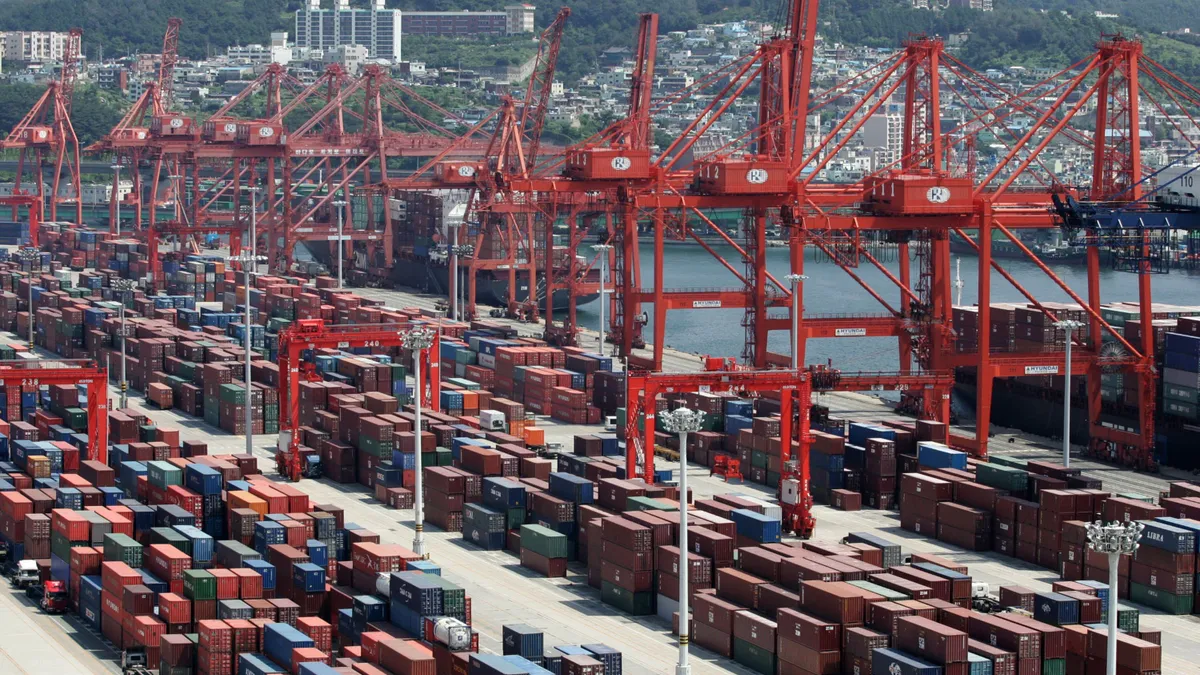Dive Brief:
- A 10% tariff on all imports proposed by former president Donald Trump would impose annual costs on U.S. households ranging from $1,700 to $2,350 and erode income for the median worker by as much as 3%, the American Action Forum said.
- An extra 60% tariff on imports from China — also proposed by Trump — would push up annual costs on U.S. households by $1,950, increasing consumer costs by a range between $300 billion to more than $500 billion, AAF said in a study.
- “If a 60% China tariff were to be implemented, U.S. companies reliant on supply chains stemming from China would be hard hit,” Jacob Jensen, AAF data analyst and author of the study, said Wednesday in an email response to questions. “This would only bolster established firms that can take hits to their margins while hurting up-and-coming companies.”
Dive Insight:
Since Trump last year announced his intent, if reelected, to impose a sweeping 10% import tax, several studies have indicated that the benefits would pale in comparison with the costs to U.S. households, economic growth, fiscal health and national security.
“The proposed tariff policy raises costs for businesses and in turn weighs on growth and productivity, and lifts inflation as businesses pass many of their higher costs to consumers,” Moody’s Analytics Chief Economist Mark Zandi said this month in a study.
The blanket tariff would fail to reduce the U.S. trade deficit, Zandi said, noting that “any in-kind reprisals would further depress U.S. exports and exacerbate the trade deficit.”
Higher tariffs may jar already fragile global supply chains and deter investment in such distribution networks, he said. “Deliveries could also be disrupted as producers divert shipments to markets without tariffs and businesses try to source from domestic suppliers.”
In addition, Trump’s tariff proposals would harm U.S. workers, reducing after-tax incomes for those in the bottom half of the income distribution by 3.5%, the Peterson Institute for International Economics said.
The tariffs would annually cost at least $1,700 in increased taxes for a typical middle-income household while “inflicting considerable collateral damage on the U.S. economy,” the institute said in a study published in May.
“Tariffs are a regressive and distortionary source of public finance, and they do not help the groups they are intended to help,” the Peterson Institute said.
“They instead introduce new economic inefficiencies and collateral damage, and they make it more difficult to work cooperatively with allies and partners to solve our most vexing international problems” such as curbing conflicts, combating climate change and protecting public health, the institute said.
Harm from a U.S.-led increase in import taxes would spread abroad and could bring unintended consequences, according to AAF President Douglas Holtz-Eakin.
For example, a 10% tariff would amount to 3% of the gross domestic product of both Mexico and Vietnam, and 2% of Canada’s GDP, AAF found.
“A dramatic increase in U.S. tariffs would have fallout far beyond the economics of U.S. consumers, threatening key relationships with allies and inviting a global trade war,” Holtz-Eakin said Wednesday in a blog post.
A 10% across-the-board tariff would yield some benefits, Jensen said.
Job openings would increase in some protected industries and tariff revenues would rise to about $300 billion for a gain of nearly 200%, he said.
Yet “this revenue would not last as consumers and producers respond to price increases and start to import less,” Jensen said.












